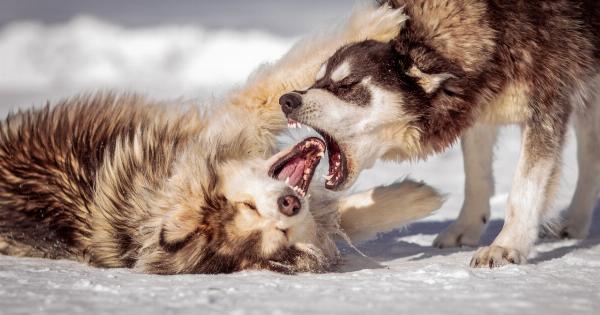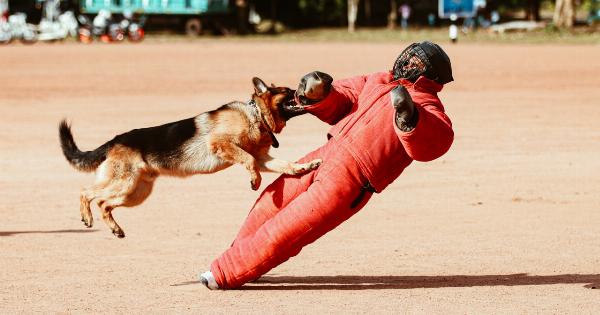Mounting behavior, also known as humping, is a natural and instinctive behavior observed in dogs.
While it may appear awkward or embarrassing to human observers, understanding the science behind this behavior can help shed light on its purpose, significance, and various contextual factors influencing it. In this article, we delve into the biology, evolution, and social dynamics underlying dog mounting behavior.
1. The Biology of Dog Mounting
Mounting behavior in dogs is primarily linked to their reproductive instinct. Both male and female dogs can exhibit this behavior, although it is more commonly observed in intact males or dogs that have not been spayed or neutered.
Hormones, particularly testosterone in males, play a significant role in triggering mounting behavior.
This behavior is believed to be an evolutionary adaptation that helps male dogs secure mating opportunities. When a male dog mounts another dog, it allows him to simulate the mating process and communicate his reproductive availability.
From a biological standpoint, mounting serves as a precursor to mating and facilitates the transfer of sperm during sexual reproduction.
2. The Evolutionary Significance
The origins of dog mounting behavior can be traced back to their wild ancestors, wolves. In wolf packs, mounting is commonly observed as a dominance behavior, establishing hierarchies within the group.
Similarly, domesticated dogs, which share a common ancestry with wolves, retain certain instinctive behaviors associated with social dynamics.
Mounting can also serve as a method for dogs to assert their social status or dominance. By mounting, dogs communicate their position within a social hierarchy, displaying their authority over other individuals.
However, it is important to note that mounting does not always indicate dominance; it can also occur in play settings or as a result of excitement.
3. Social Factors Influencing Mounting Behavior
While the reproductive and evolutionary factors contribute to mounting behavior, various social factors can also influence its occurrence. Dogs, being highly social animals, engage in mounting behavior as a means of communication and interaction.
3.1 Play Behavior: Mounting can be observed during play sessions between dogs, especially when they are highly excited. It can serve as a form of play signal or a way to initiate interaction.
Mounting during play should typically not be cause for concern, as it is usually consensual between dogs and does not indicate aggression or dominance.
3.2 Dominance or Territory Assertion: Mounting can be a dominant behavior, particularly in situations where a dog wants to establish authority or claim dominance over another individual.
This behavior is more commonly observed in intact male dogs or during encounters with unfamiliar dogs.
3.3 Sexual Motivation: Dogs may mount other dogs or even objects when they experience sexual motivation. This behavior can be observed during their mating season or when they encounter a dog in heat.
It is important to note that sexual motivation does not exclusively occur in intact dogs and can also be seen in altered individuals.
4. Reasons for Dog Mounting
4.1 Sexual Arousal: Mounting is often associated with sexual arousal and can be triggered by the presence of a receptive dog in heat.
It is the dog’s way of expressing its interest in mating, and the behavior is part of their natural reproductive cycle.
4.2 Play and Communication: As mentioned earlier, mounting during play can be a form of communication between dogs. It signals engagement, excitement, and a desire to interact with the other dog.
This behavior is typically seen in social settings and is consensual between dogs.
4.3 Social Hierarchy and Dominance: Dogs may mount to establish or reinforce their position within a social group. It can be a way to assert dominance or claim territory.
This behavior is more commonly observed in intact males but can also occur in females and neutered/spayed individuals.
5. Addressing Mounting Behavior
While mounting behavior is a natural part of a dog’s behavior, it can sometimes become a concern for owners, particularly if it is excessive or directed towards humans or inappropriate objects.
Here are a few tips for addressing and managing mounting behavior:.
5.1 Neutering/Spaying: In many cases, neutering or spaying can help reduce mounting behavior. This surgical procedure helps regulate hormone levels, diminishing the sexual motivation behind the behavior.
It can also contribute to the overall well-being and health of your dog.
5.2 Redirection and Distraction Techniques: When a dog displays mounting behavior towards inappropriate targets or during inconvenient times, redirecting their attention and providing alternative outlets for their energy can be helpful.
Engaging them in interactive play or offering puzzle toys can divert their focus and reduce mounting tendencies.
5.3 Training and Reinforcement: Consistent training is crucial in managing mounting behavior.
Teaching your dog basic obedience commands, including “sit” or “down,” can help redirect their focus and reinforce appropriate behaviors. Positive reinforcement techniques, such as rewards or treats, can also encourage desired behavior.
6. Understanding Dog Mounting Behavior
Observing and understanding the science behind dog mounting behavior can provide valuable insights into its underlying motives, contributing factors, and appropriate management strategies.
It is essential to recognize that mounting, when consensual or within social boundaries, is a normal and natural canine behavior. However, if it becomes excessive, directed towards humans, or causes discomfort, consultation with a professional dog behaviorist or veterinarian is recommended.
With proper understanding, guidance, and training, dog owners can ensure their pets’ mounting behavior remains within acceptable limits, fostering a harmonious coexistence between dogs and their human companions.























